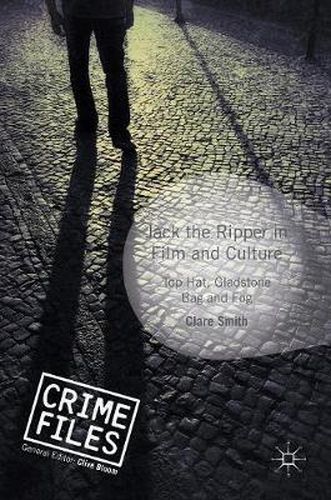Readings Newsletter
Become a Readings Member to make your shopping experience even easier.
Sign in or sign up for free!
You’re not far away from qualifying for FREE standard shipping within Australia
You’ve qualified for FREE standard shipping within Australia
The cart is loading…






This title is printed to order. This book may have been self-published. If so, we cannot guarantee the quality of the content. In the main most books will have gone through the editing process however some may not. We therefore suggest that you be aware of this before ordering this book. If in doubt check either the author or publisher’s details as we are unable to accept any returns unless they are faulty. Please contact us if you have any questions.
In 1888 the name Jack the Ripper entered public consciousness with the brutal murders of women in the East End of London. The murderer was never caught, yet film and television depicts a killer with a recognisable costume, motive and persona. This book examines the origins of the screen presentation of the four key elements associated with the murders - Jack the Ripper, the victims, the detective and Whitechapel. Nineteenth-century history, art and literature, psychoanalytical theories of Freud and Jung and feminist film theory are all used to deconstruct the representation of Jack the Ripper on screen.
$9.00 standard shipping within Australia
FREE standard shipping within Australia for orders over $100.00
Express & International shipping calculated at checkout
This title is printed to order. This book may have been self-published. If so, we cannot guarantee the quality of the content. In the main most books will have gone through the editing process however some may not. We therefore suggest that you be aware of this before ordering this book. If in doubt check either the author or publisher’s details as we are unable to accept any returns unless they are faulty. Please contact us if you have any questions.
In 1888 the name Jack the Ripper entered public consciousness with the brutal murders of women in the East End of London. The murderer was never caught, yet film and television depicts a killer with a recognisable costume, motive and persona. This book examines the origins of the screen presentation of the four key elements associated with the murders - Jack the Ripper, the victims, the detective and Whitechapel. Nineteenth-century history, art and literature, psychoanalytical theories of Freud and Jung and feminist film theory are all used to deconstruct the representation of Jack the Ripper on screen.